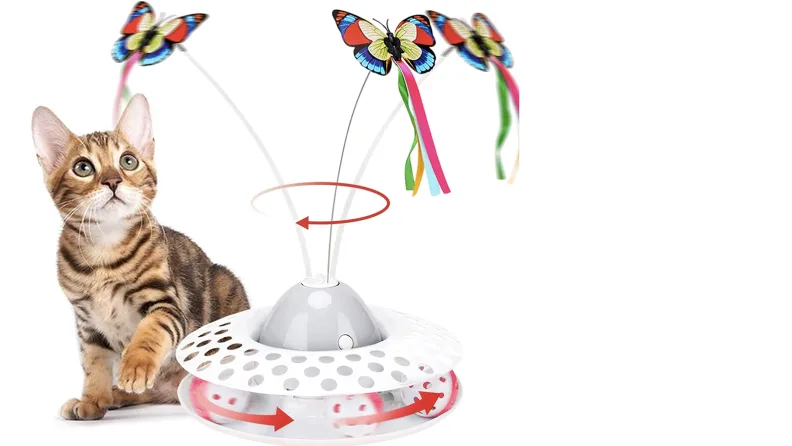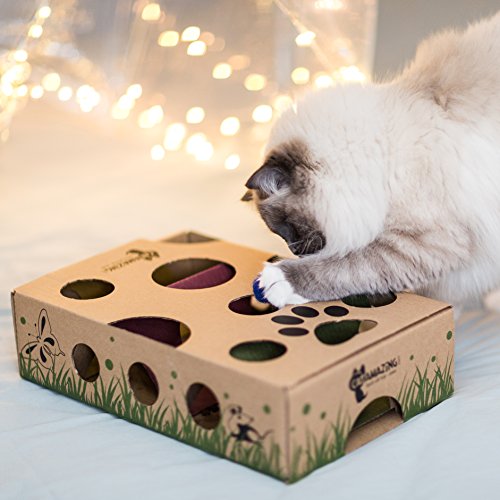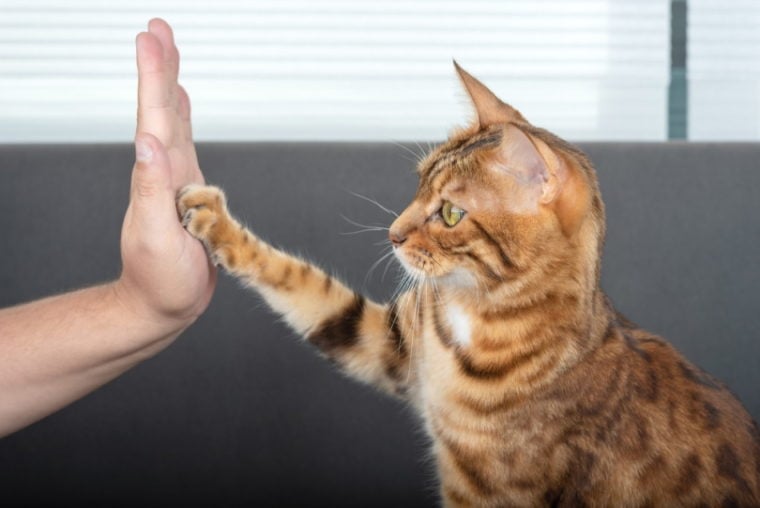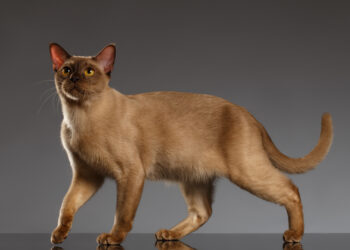I. Introduction
In a world where cats are more than just pets, providing enrichment becomes a crucial aspect of responsible cat ownership. As cat lovers, we want our feline friends to live happy, fulfilled lives, and incorporating enrichment ideas can make a significant difference. Let’s explore the importance of cat enrichment and discover various ideas to keep your furry companion content.
II. Understanding Your Cat’s Needs
Understanding your cat’s innate behaviors is the first step towards effective enrichment. Cats have instinctive behaviors that, when addressed, contribute to their overall well-being. Physical and mental stimulation are essential for a healthy and happy cat. Watch out for signs indicating your cat’s satisfaction, such as purring, playful behavior, and relaxed body language.
III. DIY Enrichment Ideas
A. Homemade Puzzle Feeders
Engage your cat’s problem-solving skills by creating DIY puzzle feeders. Simple household items can be repurposed to make interactive feeding stations, turning mealtime into a mentally stimulating activity.
B. DIY Catnip Toys
Catnip is a natural stimulant for cats, and incorporating it into DIY toys can provide hours of entertainment. From catnip-infused felt mice to catnip-stuffed socks, these homemade toys cater to your cat’s playful instincts.
C. Creating Climbing Spaces
Cats love to explore vertical spaces. Build or buy cat shelves and trees to satisfy their climbing urges. These structures not only provide exercise but also offer a cozy spot for your cat to observe their surroundings.
IV. Interactive Toys for Enrichment
A. Laser Pointers and Feather Wands
Interactive toys like laser pointers and feather wands are excellent for engaging your cat in active play. These toys mimic the movements of prey, allowing your cat to unleash their hunting instincts in a safe and playful manner.
B. Automated Toys for Solo Play
For times when you’re away, consider automated toys that stimulate your cat’s curiosity. Battery-operated toys with unpredictable movements can keep your cat entertained and mentally engaged even when you’re not around.

C. Puzzle Feeders and Treat Dispensers
Combine feeding time with mental stimulation by using puzzle feeders and treat dispensers. These interactive devices make your cat work for their food, promoting problem-solving and preventing boredom.
V. Outdoor Enrichment Options
A. Safe Outdoor Enclosures
Create a safe outdoor space for your cat to explore by installing cat enclosures or building a catio. These enclosed areas allow your cat to experience the outdoors while remaining protected from potential dangers.
B. Harness Training for Cats
Teach your cat to walk on a leash using a harness. This controlled outdoor experience provides mental and physical stimulation, allowing your cat to explore the environment under your watchful eye.
C. Exploring Cat-Friendly Gardens
If you have a garden, make it cat-friendly by planting catnip, grasses, and other non-toxic plants. This allows your cat to indulge in their natural behaviors while enjoying the fresh air.
VI. Enrichment Activities for Indoor Cats
A. Hide-and-Seek with Treats
Hide treats around your home for your cat to find. This activity encourages exploration and taps into their hunting instincts. Start with easy hiding spots and gradually increase difficulty.

B. Rotating Toys to Avoid Boredom
Cats can quickly grow bored with the same toys. Keep their interest alive by rotating toys regularly. Store some toys out of reach and introduce them periodically to spark curiosity.
C. Designated Playtime
Set aside dedicated playtime each day. Engage your cat in interactive games, using toys that mimic prey. This bonding time strengthens your relationship and ensures your cat stays physically active.
VII. Mental Stimulation through Training
A. Clicker Training Basics
Clicker training is an effective way to mentally stimulate your cat. Use a clicker to reinforce positive behaviors, associating the sound with rewards. This method is especially useful for teaching tricks and commands.
B. Teaching Fun Tricks
Challenge your cat’s intellect by teaching them fun tricks. From high-fives to rolling over, positive reinforcement during training sessions fosters a sense of accomplishment for your furry friend.

C. The Importance of Positive Reinforcement
Always use positive reinforcement during training. Reward desired behaviors with treats or praise, reinforcing the connection between the action and the positive outcome. This encourages your cat to willingly participate in training sessions.
VIII. Cat Furniture and Accessories
A. Choosing Suitable Scratching Posts
Cats have a natural instinct to scratch, and providing appropriate outlets for this behavior is essential. Choose sturdy scratching posts or pads to prevent damage to furniture and fulfill your cat’s need to scratch.
B. Comfortable Beds and Hideaways
Offer your cat cozy and comfortable resting spots. Cats love to nap in secluded areas, so providing cozy beds and hideaways satisfies their desire for security and warmth.
C. Cat Trees for Vertical Space
Cat trees provide an excellent way for your cat to exercise and survey their territory from an elevated position. Choose a tree with various levels and scratching surfaces to cater to different preferences.
IX. Maintaining Consistent Enrichment
A. Observing Your Cat’s Preferences
Pay attention to your cat’s preferences and adjust enrichment activities accordingly. Some cats may prefer climbing, while others enjoy interactive play. Tailoring activities to their liking ensures maximum engagement.
B. Rotating Enrichment Activities
To prevent boredom, regularly introduce new enrichment activities and rotate existing ones. This keeps the experiences fresh and exciting for your cat, preventing them from losing interest.
C. Adjusting for Age and Health
As your cat ages or if health concerns arise, adjust enrichment activities accordingly. Senior cats may benefit from gentler exercises, while kittens may require more frequent play sessions to burn off excess energy.
X. Common Mistakes to Avoid
A. Overlooking Safety Concerns
Ensure all enrichment activities are safe for your cat. Remove any small objects that could be swallowed, secure climbing structures, and supervise outdoor adventures to prevent accidents.
B. Ignoring Individual Preferences
Each cat is unique, so what works for one may not appeal to another. Pay attention to your cat’s individual preferences and tailor enrichment activities to suit their personality and interests.
C. Not Consulting with a Veterinarian
Before implementing new activities, especially if they involve dietary changes or increased physical exertion, consult with your veterinarian. They can provide guidance on the most suitable enrichment strategies based on your cat’s health.
XI. Conclusion
Enriching your cat’s life is a rewarding endeavor that strengthens your bond and enhances their overall well-being. By understanding their instincts and incorporating a variety of enrichment activities, you can provide a stimulating and fulfilling environment for your feline friend.
FAQs
- Q: How often should I rotate my cat’s toys? A: It’s a good idea to rotate your cat’s toys every few days to keep them interested and engaged.
- Q: Can I train an older cat to walk on a leash? A: Yes, older cats can be trained to walk on a leash, but patience and positive reinforcement are key.
- Q: Are all plants safe for my cat to interact with in a cat-friendly garden? A: No, some plants can be toxic to cats, so it’s essential to research and choose cat-safe plants for your garden.
- Q: What if my cat doesn’t seem interested in DIY toys? A: Try different types of toys and observe your cat’s preferences. Not all cats have the same interests, so find what resonates with your feline friend.
- Q: How can I tell if my cat is getting enough mental stimulation? A: A content and mentally stimulated cat will exhibit playful behavior, curiosity, and a relaxed demeanor. If unsure, consult with your veterinarian.





















